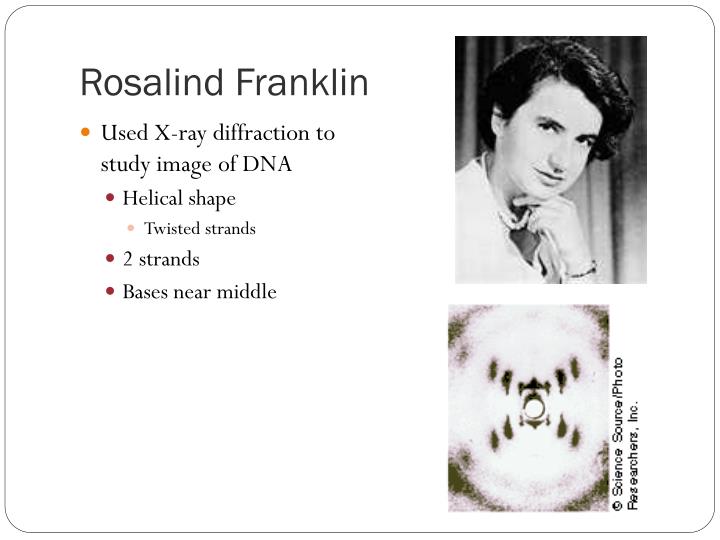

The Watson and Crick model for DNA called for a double helix. The X-shaped cross pattern and its symmetry suggested to Franklin and also to Watson and Crick a helix arrangement for the B form of DNA. The primary one had a period of 0.34 nm and the second one had a 3.4 nm period.

X-ray diffraction studies determined two levels of periodicities along the long axis of the DNA fibers. mere inspection of the X-ray picture gave several of the vital helical parameters." Wilkins, Stokes, and Wilson interpreted the results of their X-ray photograph as consistent with a helix of 2 nm diameter. the black cross of reflections which dominated the picture could arise only from a helical structure. Wilkins is reported to have shown the unpublished X-ray photograph of DNA to Watson and Crick, at which point Watson is reported to have said "The instant I saw the picture my mouth fell open and my pulse began to race. The features of Franklin's photo suggested that DNA had a helical structure based upon the previous work of Stokes and Wilkins and Cochran, Crick, and Vand. In May of 1952 Franklin obtained the first good X-ray diffraction pattern of the wet B form of DNA. Crick were working in the Bragg X-ray research group at Cambridge.Īnswer to Question 1 What is the shape of the molecule? Is it a straight chain? Are there two or three strands in the helix? In 1951, Rosalind Franklin joined John Randall’s research group at King's College, University of London, to work on DNA, along with Maurice Wilkins and with Raymond Gosling, a graduate student in the group who had taken an X-ray photograph of DNA. Question 4 How are the bases involved? How many are there per coil (period) of polymer chain? How are they bonded? The X-ray diffraction determinations of the structure of DNA began in the early 1950s. Question 3 Are the phosphates on the outside and the bases on the inside of the helix or vice versa? Question 2 Are the chains parallel or anti-parallel? That is do the chains run in the same or opposite directions? Question 1 What is the shape of the molecule? Is it a straight chain? Are there two or three strands in the helix? To prove the model for the structure of DNA, four questions had to be answered: They go on to state that "the bases are on the inside of the helix and the phosphates on the outside" and that "the structure repeats after 10 residues on each chain". Furthermore "both chains follow right-handed helices, but owing to the dyad the sequences of the atoms in the two chains run in opposite directions". Watson's and Crick's model for the structure of DNA "has two helical chains each coiled round the same axis." They stated that " each chain consists of phosphate diester groups joining beta-D-deoxyribofuranose residues with 3',5' linkages". D eoxyribo N ucleic A cid Structure Determination Model


 0 kommentar(er)
0 kommentar(er)
